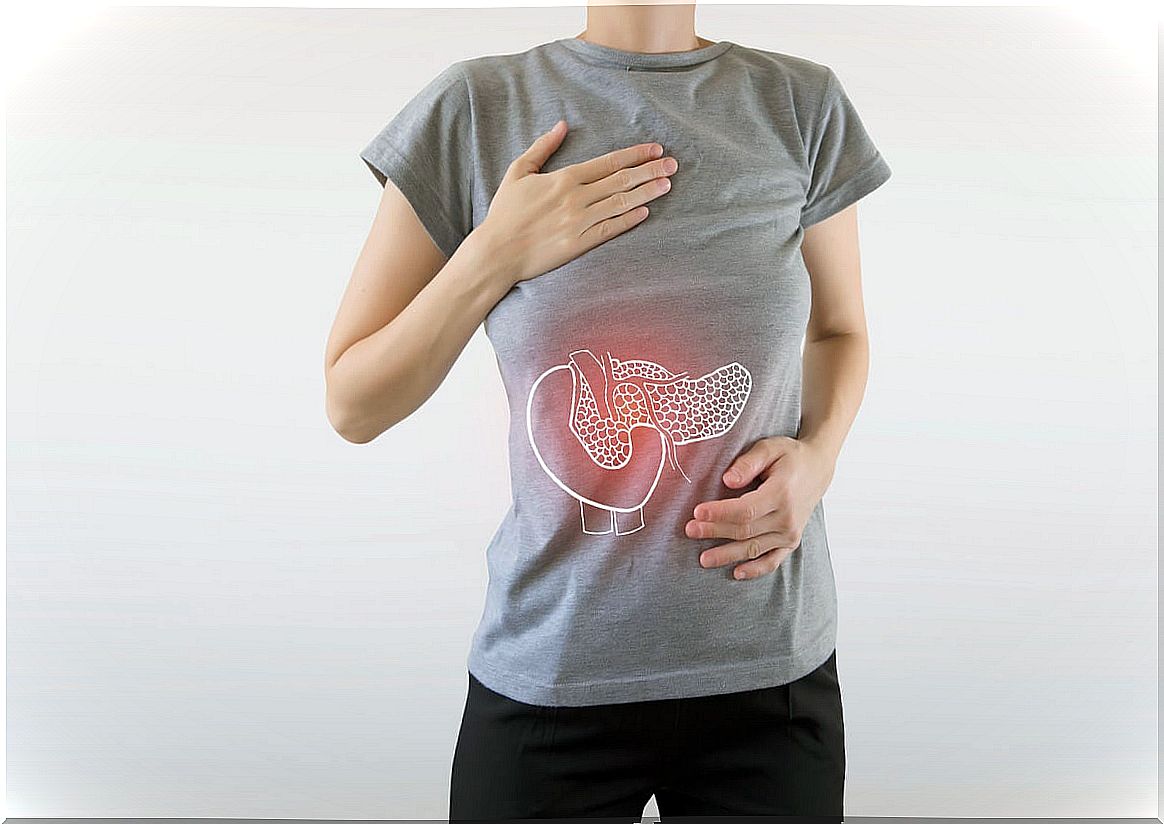How To Relieve Pancreatitis Pain?
The pain of pancreatitis is one of the most powerful in the entire medical clinic. The disease can be an acute or chronic process, but in both cases it is usually accompanied by intense discomfort. In addition, there may be other symptoms, such as nausea, vomiting, and fever.
Pancreatitis is a gastrointestinal pathology that consists of inflammation of the pancreas. This organ is located in the upper part of the abdomen and is responsible for producing enzymes that are involved in the process of digestion.
If the pathology is mild, it can be resolved without interventions. However, it can also progress to very serious complications. In fact, the pain caused by pancreatitis can be disabling.
What is pancreatitis?
Pancreatitis is inflammation of the pancreas. This swelling occurs due to the very action of the digestive enzymes that are produced in it. That is, the substances of digestion, instead of being activated once they have been released into the intestinal tract, they are activated in the pancreas and damage it.
There are numerous situations that can trigger this pathology. In the first place, alcohol, which represents one of the most frequent causes. Some medications or surgical procedures also trigger it.
On the other hand, people who have obesity and high blood triglycerides, or high calcium, also have a higher risk of suffering from it. Finally, pancreatitis can be secondary to an infection or a tumor in the pancreas.
Chronic pancreatitis is the one that lasts over time, recurring for months and even years. It can be caused by several episodes of acute pancreatitis that, when repeated, form scar tissue in the pancreas, impairing its function.

What symptoms does it produce?
Both chronic and acute pancreatitis present with abdominal pain. It is an intense discomfort that is located in the upper part of the abdomen, near the stomach, and sometimes extends to the back. However, the rest of the accompanying symptoms vary.
In the acute presentation, nausea, vomiting, and fever are common. However, the chronicle does not show these signs. It is characterized by liquid and smelly stools, in addition to weight loss.
How is pancreatitis pain relieved?
The pain associated with pancreatitis can last from hours to become a constant symptom if it is a chronic case. Many times, it worsens after eating or lying down. Therefore, in the first place, there are a series of non-pharmacological measures to alleviate it.
It is recommended to try to remain standing or sitting when pain appears. In addition, it is essential to adopt a series of healthy lifestyle habits. The first thing is to stop drinking alcohol. At the same time, maintain a healthy diet, avoiding very heavy and high-fat meals.
For any chronic pain, many doctors recommend activities that help manage sensations and emotions. For example, meditation or yoga. Learning to focus on something other than pain can improve pain control.
The prescription and prescription of pain relievers is another option. However, the non-steroidal anti-inflammatory drugs that are available over the counter even tend to be insufficient given the intensity of the pancreatic discomfort.
Current Options for Treating Pancreatitis Pain

Given the high prevalence of this pathology and the impact that pain has on people who suffer from it, new techniques have been designed in order to alleviate the symptoms of these patients. First, the most effective surgical treatment is pancreaticojejunostomy.
This intervention is performed in people with pancreatitis who also have a dilated pancreatic duct. The stones or stones formed and housed inside are the primary motive.
The surgery consists of opening the pancreas and removing those stones that cause the obstruction of the duct. Once this is accomplished, the pancreas joins the jejunum, which is the second portion of the small intestine.
On the other hand, in cases where this problem does not exist with the channel, other techniques can be performed. However, they have not been as effective as the previous one. For example, one of them is the section of nerves to try to interrupt the nerve transmission of pain.
The best: change habits and consult a professional
What we must remember is that pancreatitis is a pathology that causes pain, either acute or chronic. Therefore, the first thing is to maintain certain appropriate habits, such as avoiding alcohol and watching your diet.
It is the doctor who must decide the most pertinent treatment for each patient. However, at present, when the pain does not stop under analgesic therapy, surgical techniques can be used. The results are still not always entirely satisfactory, but they are still being studied.








